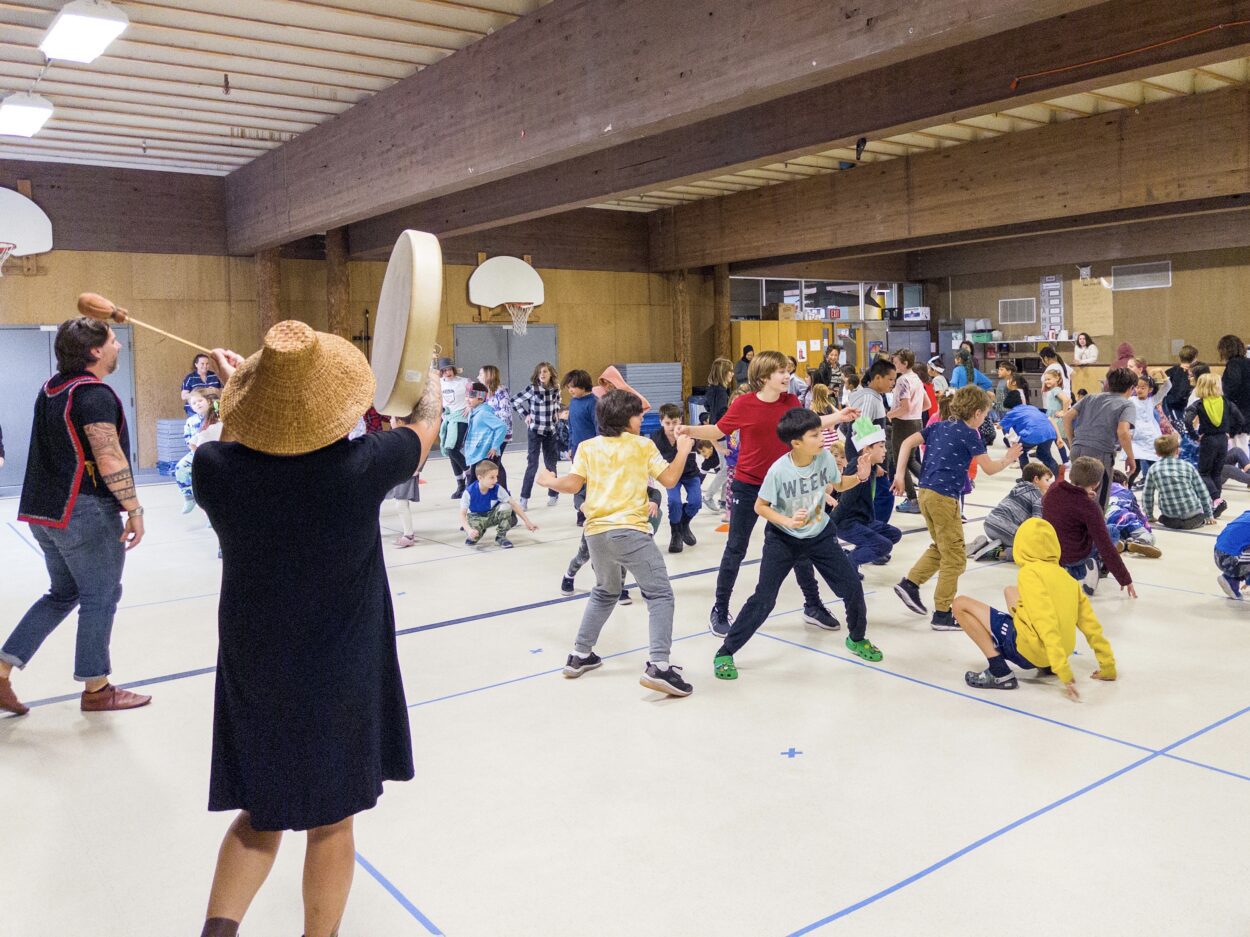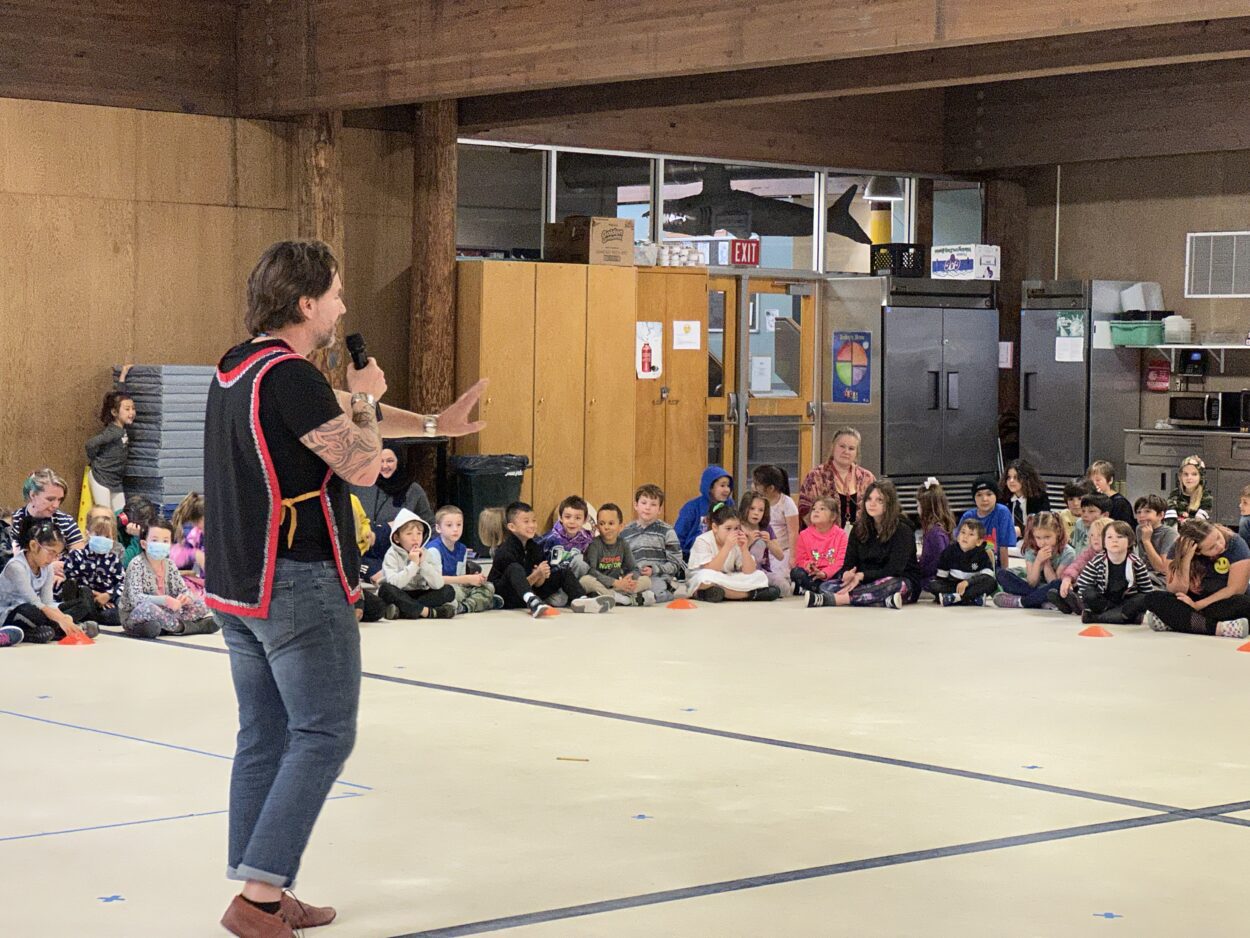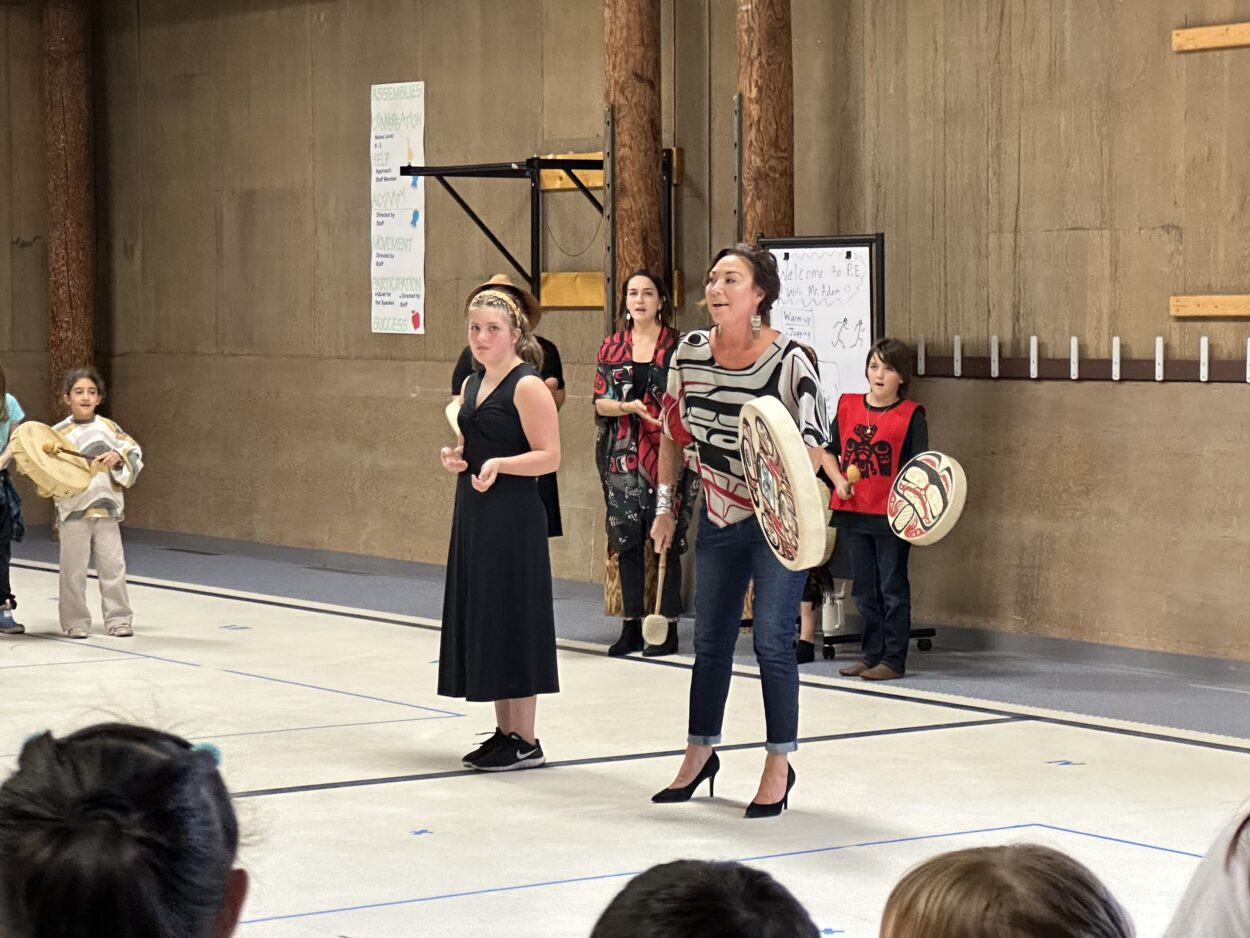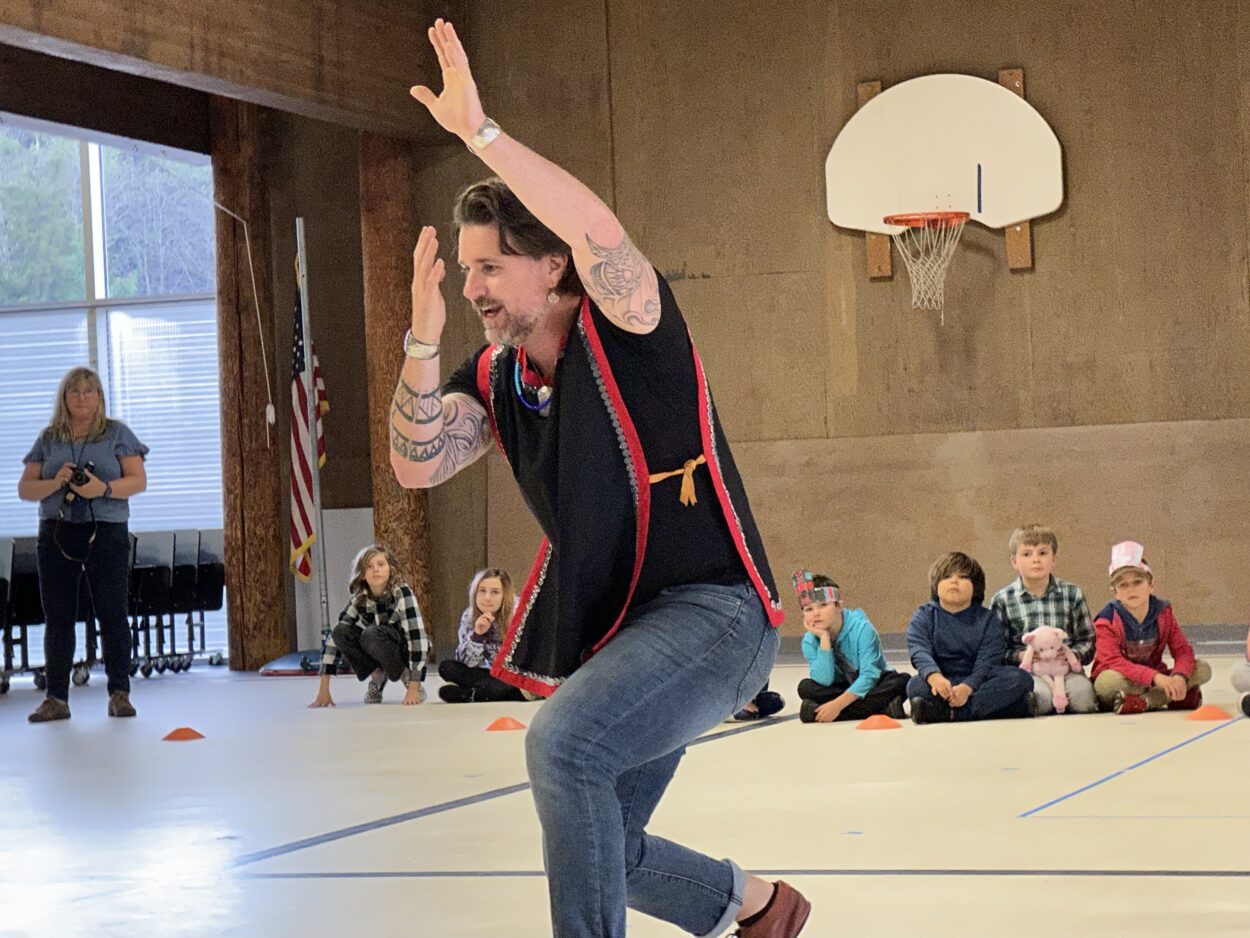
Students at a public charter elementary school in Ketchikan celebrated Indigenous Peoples’ Day with their first all-school assembly in more than two years. The Tongass School of Arts and Sciences’ assembly is part of the school district’s efforts to promote what’s known as place-based learning.
“Sii.ngaay ‘laa. Good day, Thunderbirds,” says Clint Shultz, a third and fourth grade teacher whose Haida name is White Wolf, as he welcomes students and leads them in a review of some words and phrases in the endangered Haida language, Xaad kíl.
“Can anyone tell me by a raised hand, what does haw’áa mean?”
“Thank you,” a student replies.

He tries another.
“Ready for this one? Hawsan dang hl kingsang,” he calls.
“Hawsan dang hl kingsang,” the students respond.
“And what does hawsan dang hl kingsang mean?” he asks.
A student replies with the answer: “I will see you again.”
After some language practice, it’s time to celebrate Southeast Alaska Native culture in another way: with a song.
“This is our Welcome Song. Now, we talk about every Monday and Friday when we do our Welcome Song, we tell who this song is gifted by. Well, not everyone may know who Teresa Varnell is. But luckily for us, Miss Teresa is here,” Shultz says.
Varnell is the district’s cultural coordinator, and she composed the wordless chant. She was honored as Sealaska Heritage Institute’s Educator of Distinction earlier this year.

“There were so many educators that were talking to me about having this feeling of fear or being uncomfortable about using language or singing songs and thinking they might be doing things in the wrong way. And I thought, this alleviates all of those fears,” she said. Varnell says several other districts around the region have adopted the Welcome Song.
Then it’s time for the highlight of the afternoon: the dances. Shultz leads the children through three main moves, starting with the raven dance.
“We’re going to get really low. Now, what a raven does is, the raven hops around, like this,” he says, hopping with both feet while squatting on the ground. “And as it does, it looks. So we hop around, and we look,” he explains.

“The next one you can do is the paddle dance. The hands are going to come up like this. And this is us saying we have our paddle — our war paddle, our canoe paddle — and it comes to the air, just like this,” he says, feigning holding a canoe paddle above his head.
“The last one is the wolf dance,” Shultz explains. “This is strong dancing, because we’re gonna have to stay really low, and our hands are going to come out in front of us.”

Staying low to the ground, the students hop around the gym as Tory Shultz leads drumming and singing.
Then, it’s time for the women’s dance. Students put their hands on their hips and glide around the room to what Shultz calls the Women’s Competition Song.
Shultz says the school’s curriculum is designed to tie students’ lessons to their community — what’s called place-based learning.
“We want the kids that are Alaska Native, who are Haida, Lingít and Tsimshian, to be proud of their heritage,” he said. “And then we want the other students to be able to share in that. And cultural importance at the school level of all cultures is extremely important for all the kids.”
And Varnell, who taught first and second grade at the Tongass School before becoming the district’s cultural coordinator, says it seems to be working.
“I think in particular, with Tongass School, if you just show up in the morning, you’ll see what it looks and feels like,” she said. “I think what’s most important is that they are all coming together in a different kind of sense of community that you don’t see in other schools.”
It’s a strategy the district hopes will keep students connected — both to their school and their community.
Contact the author at 907-225-9655 or eric@krbd.org





